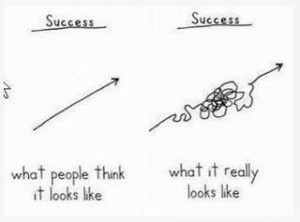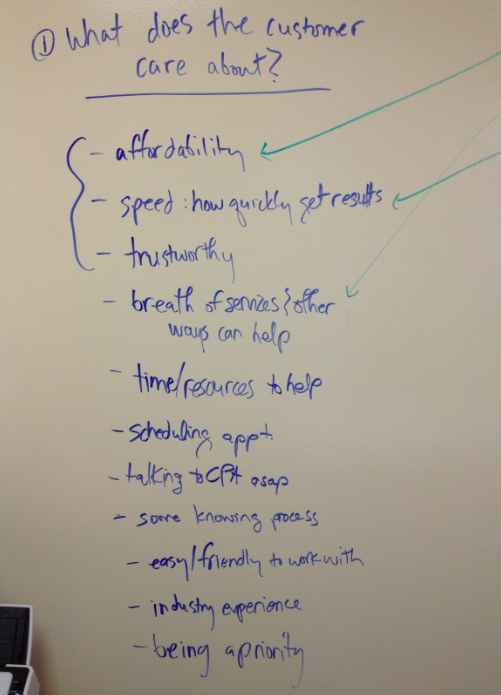This past year our team undertook the effort to re-design our customer on-boarding process. We met and started brainstorming over some basic questions: What does the customer care about? What should they care about? Any and all items were noted up on our whiteboard wall.
Over a series of get-togethers, we proceeded to follow more questions down a road to define customer touchpoints, process steps, components we needed to build out, and ideas on how to build them out. Since that time, we’ve completed some basic “construction,” and we continue to build out more components as we go along. But the biggest revelation to me from the whole process was to define the results we wanted to achieve. And that the definition was a narrative, not a number.
What do I mean? For example, some of the process results we defined were:
- “Move customer emotion from unfamiliar/unknown to familiar/trust/value”
- “Move team from unknown scope to defined project blocks”
- “Move records from incomplete customer profile/bio/file to complete contact info/bio/payment info/network folder”
A few observations I came to: First, the results seemed right when described as a “move from…to…” A process is designed to change things, and what better way to describe a result than to simply come out and say what you are trying to change “from” and “to.” Second, the process is secondary to the result; it is merely the best way we currently see to achieve the result, but its worth is only to the degree it enables, and nothing more. Which means that it can, and should, be changed whenever we find a better way. Third, the result is more stationary than the process, but it can be changed too if we come to understand it better. Actually writing it down becomes the way we can then change it.
So what does any of this have to do with the “randomness” hinted at in the post title? Take a look at the graphic above about success: what people think it looks like, and what it really looks like. My contention is that we first start with trying to identify where we think we want to go. Then we chart out a path as best we can on how we think we might get there. Then we resist the urge to not to start because we’re unable to figure out all the steps. Then we clench our teeth, and take the first few steps. Afterward, we get comfortable with the idea that our path is going to change in ways we hadn’t previously foreseen, and that’s okay. It’s supposed to be that way. Then we take a few more steps. Then we re-confirm the destination is still somewhere we want to go. Then we take a few more steps. And we keep going. And we remember to enjoy the effort. And we keep going. And we check our path. And we keep going…letting go…going…trusting…going… And then we’re surprised to wake up one day to see where we are.
This puts randomness to work for us.
Focus is both clarifying and blinding — clarifying when we’re open to seeing new things, blinding when we’re excluding extraneous things from view. It’s only by using both of these eyes, that we are led to worthwhile destinations.
“The process in which well-defined and prioritized objectives are broken down into specific states and actions whose progress can be monitored and measured is not the reality of how people find fulfillment in their lives, create great art, establish great societies or build good businesses.” John Kay
(As originally posted on the Thriveal blog.)


